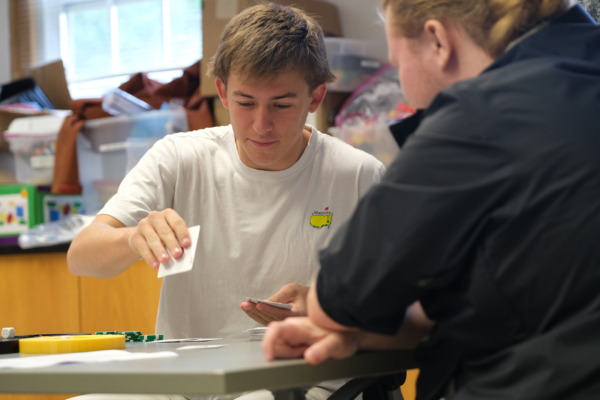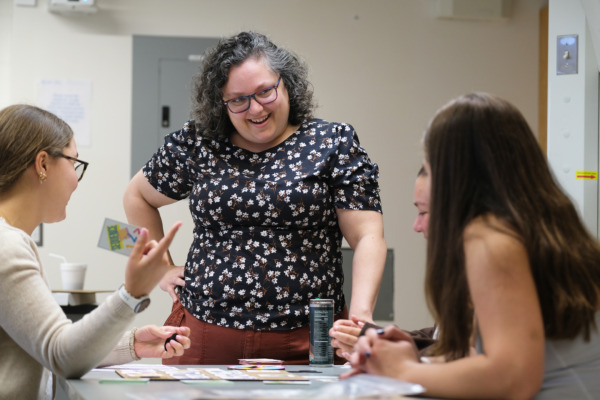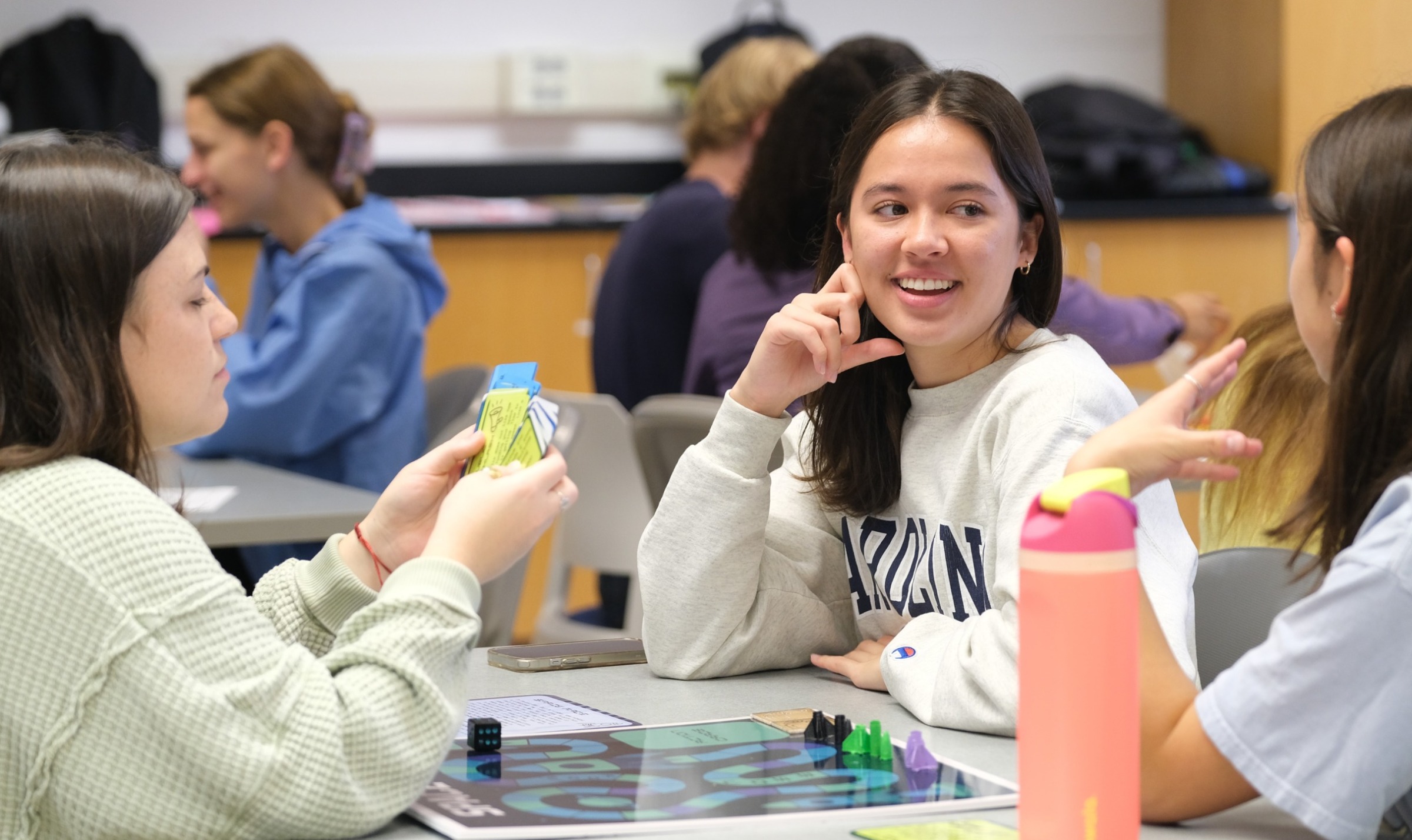When students in Keith Sawyer’s “The Maker Movement and Education” course arrived for the first week of the semester, they were handed a syllabus and a challenge. Over the next five weeks, they would learn about how design thinking can shape learning — and put it into practice by creating original tabletop games from scratch, using the tools and resources in Carolina’s BeAM makerspaces. No electronics. No pre-existing formats. Just their own creativity and a table to play on.

Sawyer, Ph.D., a leading creativity and learning researcher and the Morgan Distinguished Professor in Educational Innovations at the UNC School of Education, saw tabletop games as an ideal way to cultivate what he calls “the maker mindset” — a hands-on, design-driven approach to learning. The assignment immersed students in campus makerspaces, where they could experiment with tools like 3D printers and laser cutters as part of their creative process.
“They would be learning about design principles, maker competencies, and creativity skills, while at the same time learning how to use these makerspaces,” Sawyer explained.
Designing a game from scratch is no small feat, especially under strict creative constraints meant to mirror real-world design challenges. But that’s exactly what pushed students in EDUC 571 to think like true makers. Each game had to include a theme, a story structure, and a catchy name, along with elements of both chance and skill. Students were required to 3D print custom pieces, create 2D components using laser and vinyl cutters, and design printed boards or cards — all playable in under 20 minutes and designed for two or four players.
These constraints weren’t meant to limit creativity. They were meant to spark it.

“Professor Sawyer was able to give us restrictions but still allow creativity,” said Luke Wilkinson, a student in the class. “A lot of times when you’re put in a situation where you have so many things going through your head, some restrictions and navigational boundaries help you find creativity and that perfect reflection of who you are.”
From hand-sculpted clay figurines to sleek laser-cut boards, each game reflected its creator’s personality through a unique blend of storytelling, strategy, and visual design.
Andrew Bartlett, a business administration and exercise and sport science double major, was inspired by shuffleboard and Skee-Ball. He designed “Push and Score” as a competitive 1-vs.-1 game that showcased his own love of competitive sports.
Meagan Leung, a computer science and information science double major, created “Recipe Rush,” a fast-paced game where players race to collect ingredient cards and complete recipes before their opponents.
From MEITE student to BeAM mentor
As students dove into designing their games, a former School of Education student was helping shape the learning environment that would bring their games to life. Anna Engelke (M.A. ’17), a member of the inaugural cohort of the Master of Arts in Educational Innovation, Technology, and Entrepreneurship (MEITE) program, now serves as the education program manager at BeAM. In her role, Engelke has worked closely with faculty from more than 30 academic departments across campus to integrate design and making into their courses.
When Sawyer began developing this new course, he reached out to Engelke for support, and she was eager to collaborate. Together, they designed a syllabus that combined technology workshops on tools like Adobe Illustrator and 3D modeling with foundational education principles, including project-based learning and the value of starting with open-ended questions.
Engelke credits the interdisciplinary nature of the MEITE program with preparing her to lead cross-campus collaborations like this one.
“The [MEITE] program helped me develop a sense for how different disciplines can work together to be able to create things,” Engelke said. “That’s definitely something I’ve carried through into my current role.”
Sawyer and Engelke are eager to continue their collaboration throughout the semester, with plans to involve students in future assignments that explore robotics and educational research-driven design.
Cultivating the maker mindset
For many students, creating their own tabletop game was their first time using the campus makerspaces, an experience that left a lasting impression. Senior Sarah Gonzalez admitted she hadn’t realized these resources were even available before the course.
“We’ve spent the whole semester so far making these games and learning how to use the BeAM makerspaces,” said Gonzalez. “Seeing it all come together has been really cool.”
The project offered more than just lessons in game design. It gave students a hands-on way to turn abstract ideas into tangible experiences. Sawyer hopes the skills they’ve gained — creative problem-solving, iterative design, and the ability to work within constraints — will extend far beyond the classroom. Whether they go on to teach in K–12 settings, present ideas in corporate boardrooms, or collaborate across disciplines, the experience of making something with their hands will shape how they approach learning in any field.
“I told the students, I’m not teaching you how to be game designers,” Sawyer said. “What I’m teaching you is the ability to think like a maker.”
